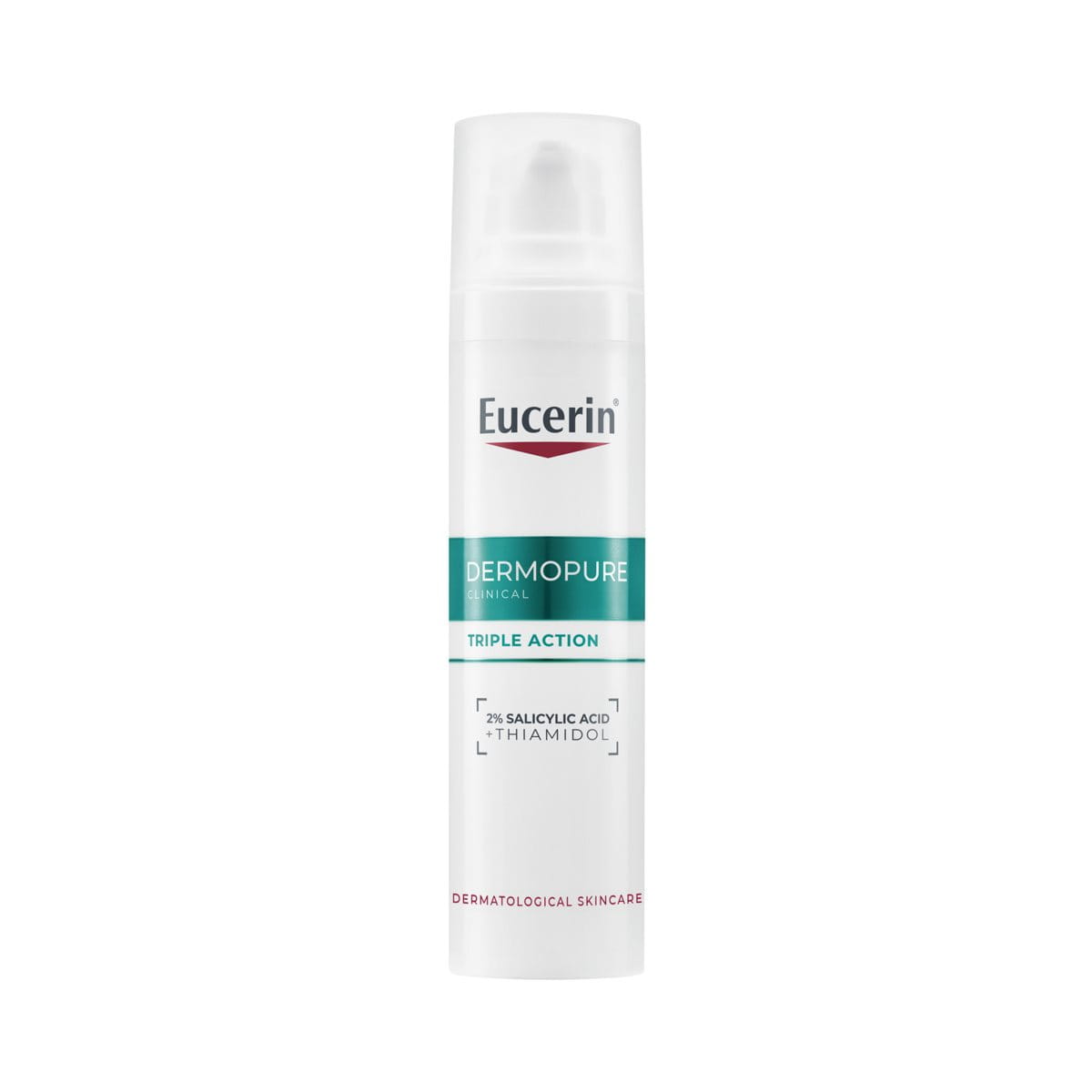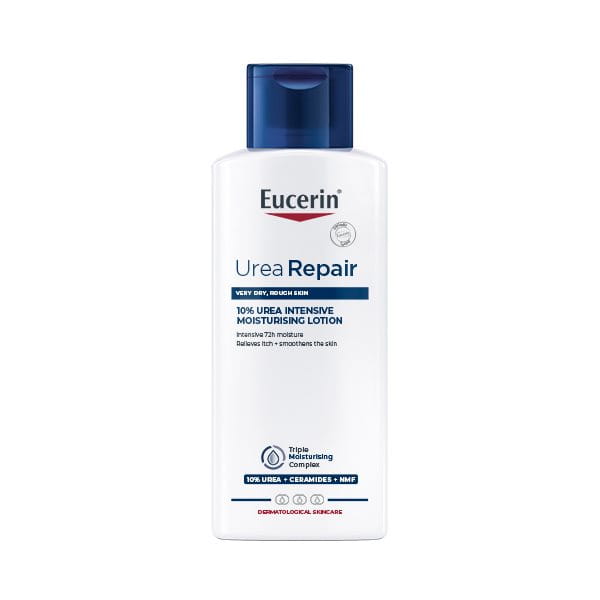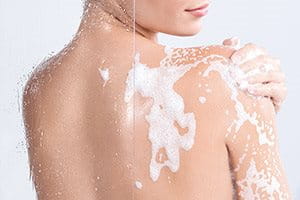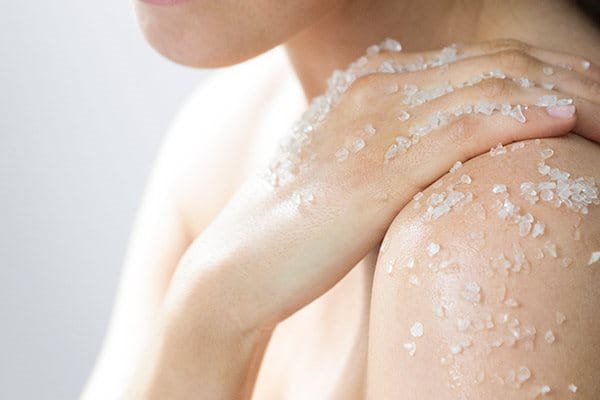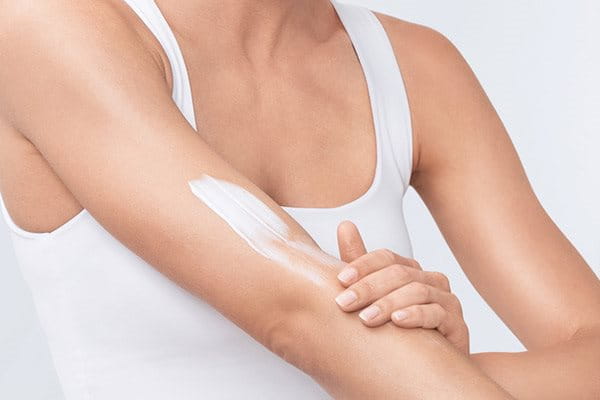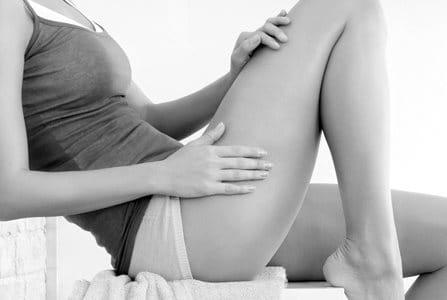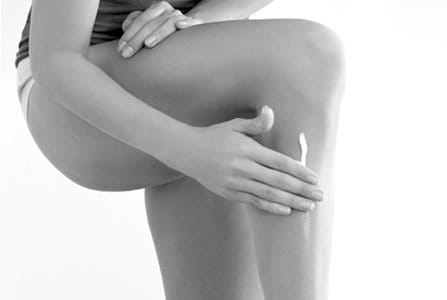Keratosis pilaris is a common skin condition that affects a large percentage of the population, often being mistaken for other conditions. In this article, we will outline the main causes, symptoms and treatment options for this condition and ways to control it.
What is keratosis pilaris?
Keratosis pilaris (pronounced ker-uh-toe-sis pih-lair-is) is a harmless, non-contagious skin disorder. This is also known as keratosis follicularis, lichen pilaris and follicular keratosis. Keratin is a substance found in skin, hair and nails, so ‘keratosis' means there is too much of this protein.
An overproduction of keratin blocks the hair follicles and small bumps to form, leading to a ‘chicken skin’ like appearance on the skin. This causes the outermost layers of skin to thicken, especially on the upper arms and thighs, as well as the buttocks and face.
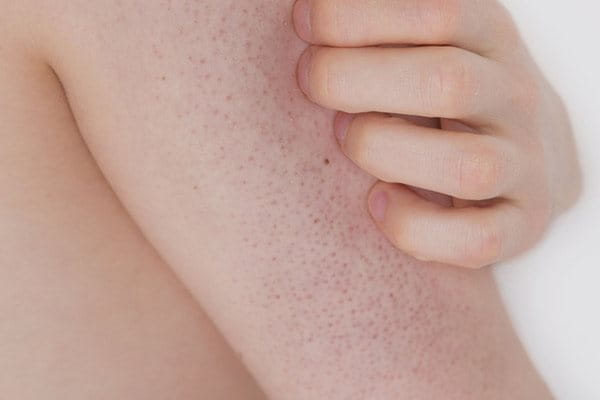
A genetic skin condition, young people are particularly affected: the first symptoms of keratosis pilaris usually appear during childhood and are very common in adolescents. Chicken skin can clear up as we age, or it can keep coming back. This common condition affects 50-70% of adolescents and around 40% of adults, but keratosis pilaris usually clears up by age 30.
It will be easily diagnosed by your doctor, so a biopsy is rarely needed unless it's associated with acne or eczema, which do not improve with treatment. Sadly, there is no known cure for keratosis pilaris, but its symptoms can be alleviated by regular skincare using appropriate oils, peels and skin creams.
Keratosis pilaris symptoms
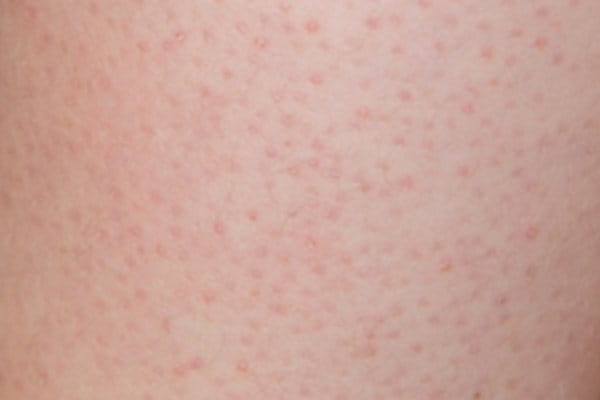
The symptoms of keratosis pilaris are small pimple-like bumps which tend to be skin-coloured or red on light skin, and brown on dark skin. These bumps are sometimes compared to goosebumps.
- Distribution is symmetrical, with keratoses primarily appearing on the face, arms, legs and buttocks but if they occur on other parts of the body, you should consult a doctor or dermatologist.
- The pin-head sized bumps (keratoses) are harmless and do not normally cause any pain or itching.
When the symptoms appear on parts of the body that are clearly visible, keratosis pilaris can cause issues around self-esteem and what starts as a cosmetic problem can become a psychological one due to the emotional discomfort.
Dry skin is particularly susceptible to ‘chicken skin’. The symptoms of keratosis pilaris worsen in conditions of low humidity (e.g. the winter) and tend to improve when humidity is higher (e.g. the summer). Sometimes, keratosis pilaris is also associated with Atopic Dermatitis. You may mistake keratosis pilaris for conditions like eczema due to the locations they are found on the body and the characteristics that may be similar such as tiny red bumps. Other conditions you may mistake chicken skin for is folliculitis, goosebumps or acne pimples.
Common locations of keratosis pilaris

Keratosis pilaris can appear on most parts of the body, except the palms and soles of your feet. Some areas where you are likely to see keratosis pilaris appear are:
- Face: Keratosis pilaris can appear on the face, especially where hair follicles get clogged. These may have an appearance like pimples or blackheads, particularly on darker skin. Keratosis pilaris on the face, especially on the cheeks, is typically more common in children than in teenagers or adults.
- Arms: A common area to spot keratosis pilaris is the upper section of the arms. This can be present among children, teens and adults and may also spread down to the forearms.
- Buttocks: This condition can also occur on the buttocks but is usually more common in adults than in children.
- Legs: Keratosis pilaris may also be found on the legs, particularly on the fronts of the thighs, and can also spread to the lower legs. Symptoms in this area can affect children, teenagers and adults. Keratosis pilaris can also be a cause for hyperpigmentation on the legs.
Keratosis pilaris treatment

The first step to managing keratinised skin is thorough personal hygiene. When symptoms are mild it’s a good idea to try out lots of different ways to treat keratosis pilaris to find out what works for you and what doesn’t. Keratosis pilaris treatment consists mainly of creams and skin lotions with ingredients such as Urea to help promote moisture in the skin, thus preventing further keratinisation.
Keratosis pilaris cream
Skin lotions with Urea (one of the skin’s own Natural Moisturising Factors) are particularly suitable for daily skin care. Urea binds moisture in the skin and prevents keratinisation, as well as loosening and removing dead skin cells to soften dry skin. For best results use lotions or creams that are fragrance and colourant-free and apply the product several times a day to the affected area of the body.
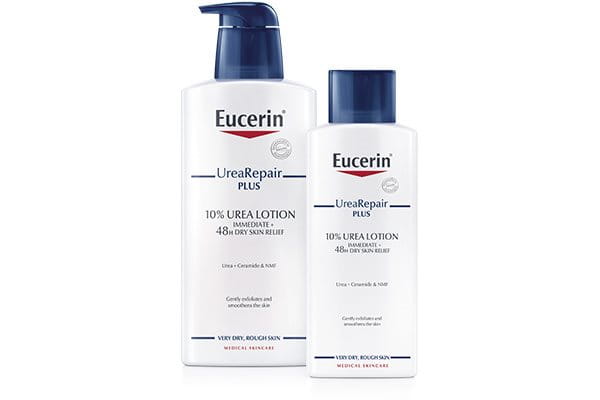
Eucerin UreaRepair PLUS 10% Urea Lotion has been specially formulated for the intensive care of dry skin and suitable as a treatment for keratosis pilaris. The formula has been clinically and dermatologically proven to deliver immediate relief and intense, long-lasting moisturisation, delaying dryness and roughness for up to 48 hours.
The formula, which combines Urea with other Natural Moisturising Factors and Ceramide (a valuable skin lipid), instantly relieves dry skin. It helps to exfoliate dead skin cells and makes the skin smooth and supple. This is also available in a 400ml bottle.
Extensive clinical and dermatological studies on dry skin prove the effectiveness of the product in treating both dry skin and keratosis pilaris. Research has indicated a significant reduction of dry symptoms with daily use.1
- Treatment of Xerosis with a topical formulation containing Glyceryl Glucoside, Natural Moisturising Factors and Ceramide; Weber et al., JCAD 2012s
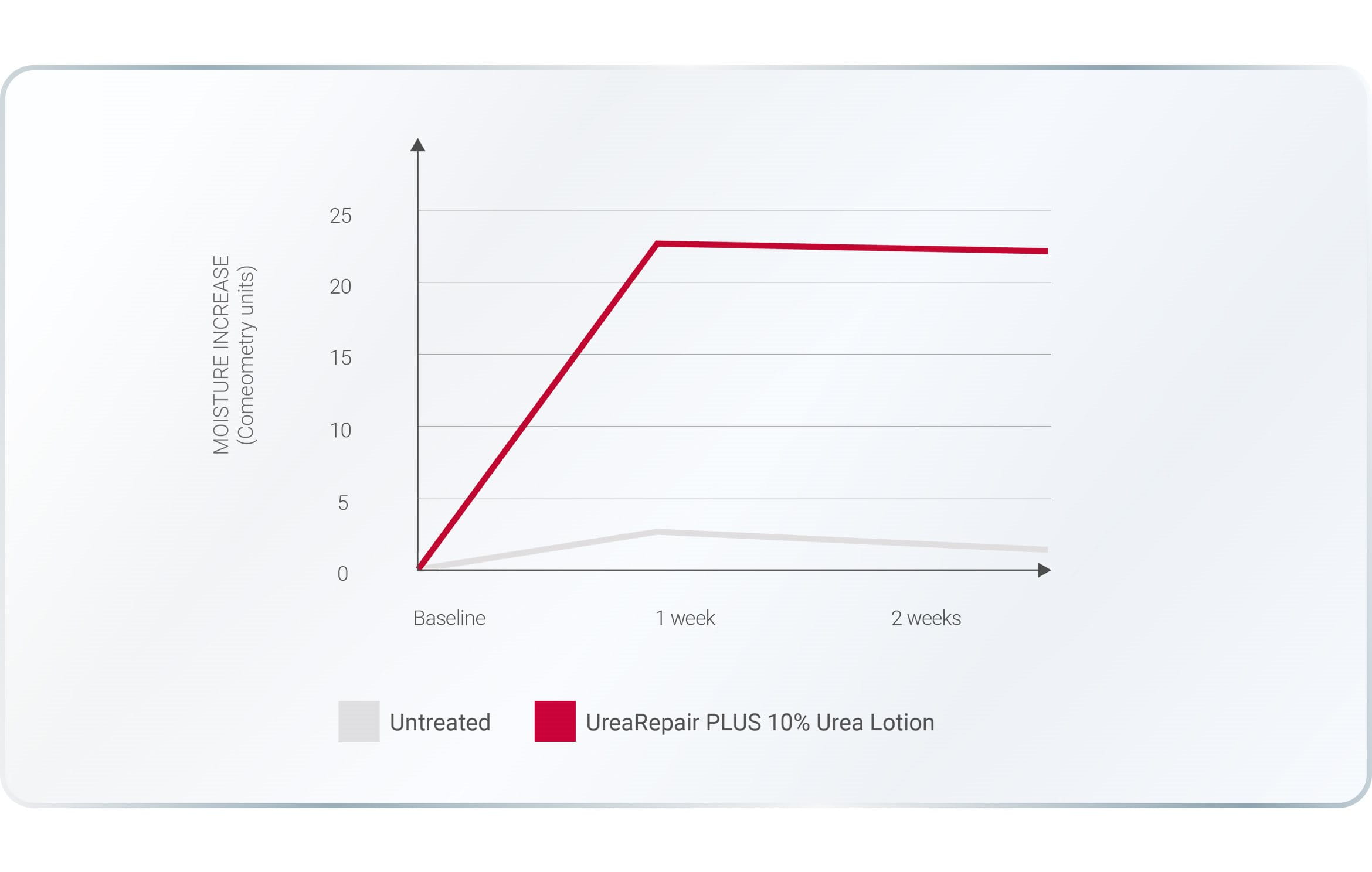
Other ways to treat keratosis pilaris
It’s a good idea to try out lots of different ways to treat keratosis pilaris to find out what works for you and what doesn’t. Even though the condition can't be cured, people with keratosis pilaris have found that the following self-care treatments and tips can reduce irritation and minimise bumps:
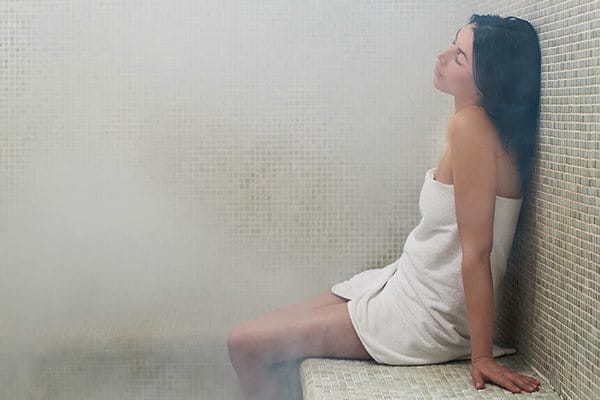

Saunas and steam baths
These help to soften skin making it easier to exfoliate and remove dead skin cells, which you can do by gently scrubbing your skin with a pumice stone or exfoliating sponge.
Cool or lukewarm showers and baths
Use warm, not boiling hot, water when bathing and avoid long bathing times (over 10 minutes) which can remove oils from the skin. Remember to pay skin dry instead of rubbing it.
Avoid tight clothing
Your skin can be irritated by tight clothes that cause friction.
Use humidifiers
Humidifiers can maintain the moisture in your skin by adding moisture to the air in a room, which helps prevent itchy flare-ups.
Nutrition
People who experience keratosis pilaris should be sure to eat a healthy diet. It can also help to avoid foods that can trigger allergies such as gluten, or to have yourself professionally tested for allergies to see if you have any food intolerances. You should also drink at least two litres of water a day and avoid unhealthy food choices such as sugary and fizzy drinks.
Other methods include pulse dye laser treatment, which reduces redness but not the roughness, and laser-assisted hair removal.
Although there is no known cure for keratosis pilaris, an appropriate skincare routine and regular moisturising with a Urea-rich product such as Eucerin UreaRepair PLUS 10% Urea Lotion will help alleviate symptoms and smooth skin.
Keratosis pilaris causes
Keratosis pilaris is caused by a build-up of the protein keratin, which is a hard protein that naturally protects the skin from harmful substances and infections. Keratin blocks the opening of hair follicles causing them to be clogged, which then develops patches of rough and bumpy skin, often mistaken for clusters of tiny pimples.
There isn’t enough concrete evidence to pinpoint exactly why keratosis pilaris may affect people more than others. Genetic factors may be a reason as to why this is, meaning your genes have a role in your chances of developing this condition.
Keratosis pilaris risk factors
Keratosis pilaris, or chicken skin, can also develop in people with conditions like:
- Hayfever
- Eczema
- Dry or rough skin
- Obesity
- Family history of the condition
- Diabetes
- Asthma
Even though there is no guaranteed way to get rid of chicken skin, symptoms can be alleviated with a suitable skincare routine and other measures (a healthy diet can help).
Keratosis pilaris may eventually clear up naturally, but since sufferers can have symptoms for many years there are a few methods to help improve the appearance of your skin.
Keratosis pilaris diagnosis
Keratosis pilaris can often be diagnosed simply by a doctor who would conduct a simple physical examination of the area of skin where you have bumps. As such, keratosis pilaris is easy and quick to recognise given its commonality in most people.
Your doctor will typically conduct an allergy test or biopsy if they are unsure and to rule out other conditions. However, the location and characteristics of the bumps should be enough information for the doctor to analyse without the need of any tests. The below characteristics are usually tell-tale signs of keratosis pilaris being present:
- The bumps being itchy or dry
- Painless
- Rough texture
- Discolouration depending on the natural colour of your skin
When to see a doctor
Typically, living with keratosis pilaris shouldn’t have any significant impact on your daily life, although if you don’t see any improvement four to six weeks after starting treatment you should speak to a medical professional.
Our brand values

We deliver a holistic dermo-cosmetic approach to protect your skin, keep it healthy and radiant.

For over 100 years, we have dedicated ourselves to researching and innovating in the field of skin science. We believe in creating active ingredients and soothing formulas with high tolerability that work to help you live your life better each day.

We work together with leading dermatologist and pharmacist partners around the world to create innovative and effective skincare products they can trust and recommend.

